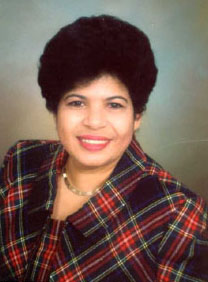



Interested in writing a story
or nominating a friend? Yes
En Español
|
Learning from international keypals
A library media specialist from New Jersey describes how she connected her students with the world in one year. By Josephine Dervan |
|
|
 Jo Dervan, Library Media Specialist |
We started a correspondence between our fifth graders and the fifth graders of both schools. Our teachers sent student names, ages, and interests to the Canadian teachers, who then paired up the students. Since we lived in such different places, we gave our Strathmore students geography lessons on the locations of both schools. We used classroom maps, globes, and Internet resources in the library. Both Deer Meadow and Leo Ussak had geographic information on their school Web sites, which we were able to access in library class. At the outset, our students were very excited, but they became bored with the letters when we began running out of new things to learn about each other. |
|
After our Australian exchange, I used the same strategy to find keypals in South Africa, where we had sixth grade keypals in two schools. One was a private boys' school, Selbourne Primary, and the other a public school, Crewe Primary School, one of the first public schools to integrate following the abolishment of apartheid. To find the schools, I visited South African Schools on the Net. Both schools were in East London, a small seaside city on the Indian Ocean. |
|
Following our exchange with the South African schools, I used the University of Minnesota's Web 66 to seek other classes. We found that foreign schools with Web sites in English were a good source of correspondents. We found another sixth grade class to collaborate with at The Appeltuin School in Louvain, Belgium. We exchanged questions about our respective cultures and even a recipe for Belgian waffles! This was a more structured exchange and easier on both teachers. Route 66 also provided us with a class from Barbe Elementary in Lake Charles, Louisiana and another from Valley View Elementary in Bloomington, Minnesota. These were both third grade classes. |
|
As the facilitator of the exchanges, I learned many things as well. Since I was dealing with one computer at school, I had to do much of the actual "writing" at home on weekends. This was time-consuming. When we received answers, I would copy them, keep one, and give out the other to the students. Then they would answer on the original letter's bottom half, to assure direct answers to questions. Each class exchanged photos, some by Internet and some by snail mail. We also set up a large map on a board outside the library with a marker for each school. Our school Web page had a keypal page as well, with flags and links to all our keypal school Web sites. |
|
Once you decide to enter a keypal relationship, there are two things to consider before contacting anyone. First, decide on a time frame. Shorter exchanges are easier to manage for a first timer than those that last a full year. Second, decide whether you want a foreign or a domestic class. Domestic classes are easier to write to, but the foreign ones may offer more cross-cultural opportunities. Then plan to contact collaborating teachers early in the year or even in the late summer. Direct inquiries or responses to ads in listings like Global Rigby Heinemann are easier than sending inquiries to random schools, many of which can be found on Web 66. Once you get answers, please respond politely to all classes, even those you cannot collaborate with. You can encourage students and get them excited by doing Internet and print research on the geographic area of the keypal class. It's also good to exchange enlarged class photos to put a face on the letters. Kinkos or other copying service centers allow you to do this inexpensively. Then, when the students write, let them write their own responses and save them on a disk. The contents of the disk can be attached to one e-mail letter. Finally, encourage students to answer in a timely fashion to keep the correspondence fresh and interesting. You will be surprised how much both you and your students will learn. |
|